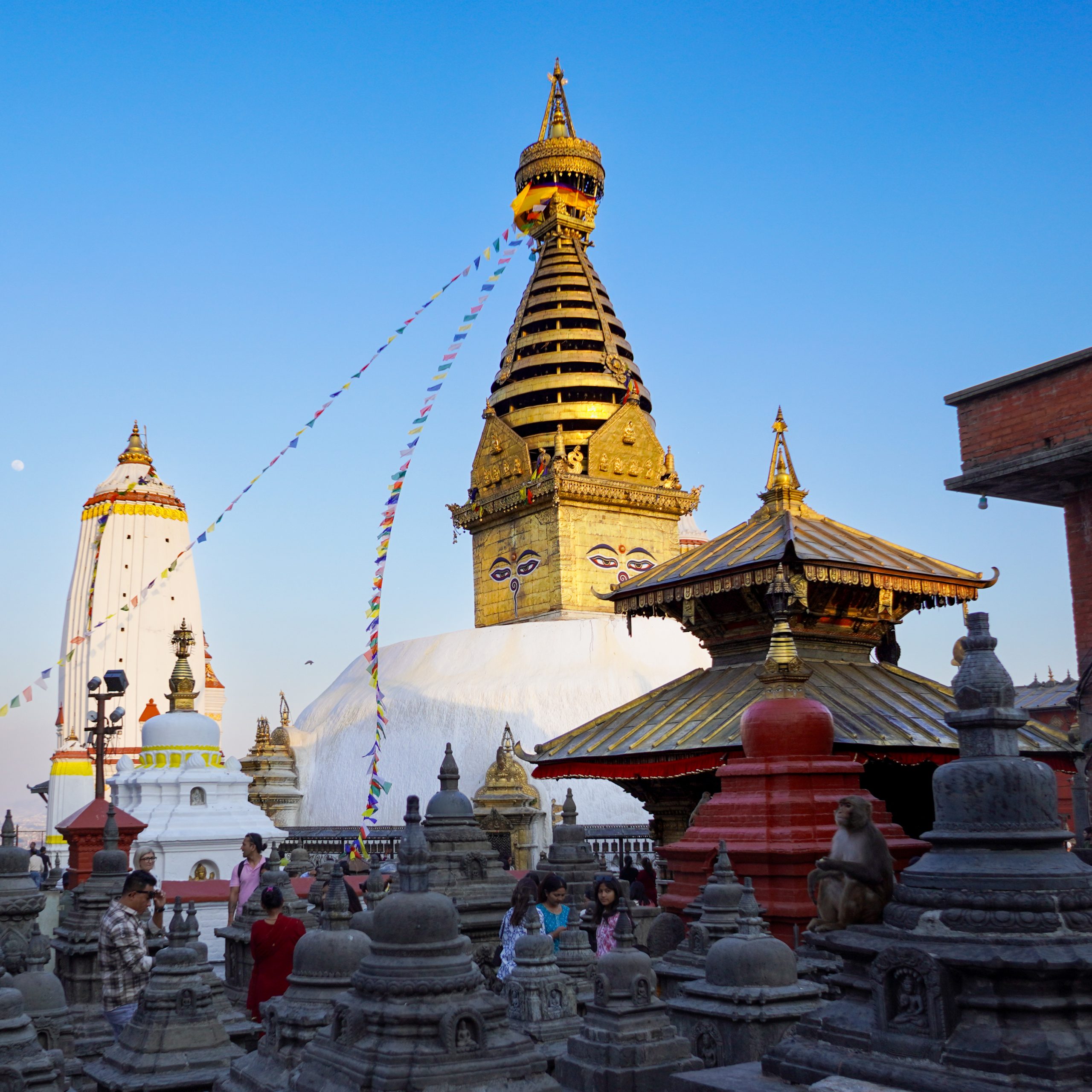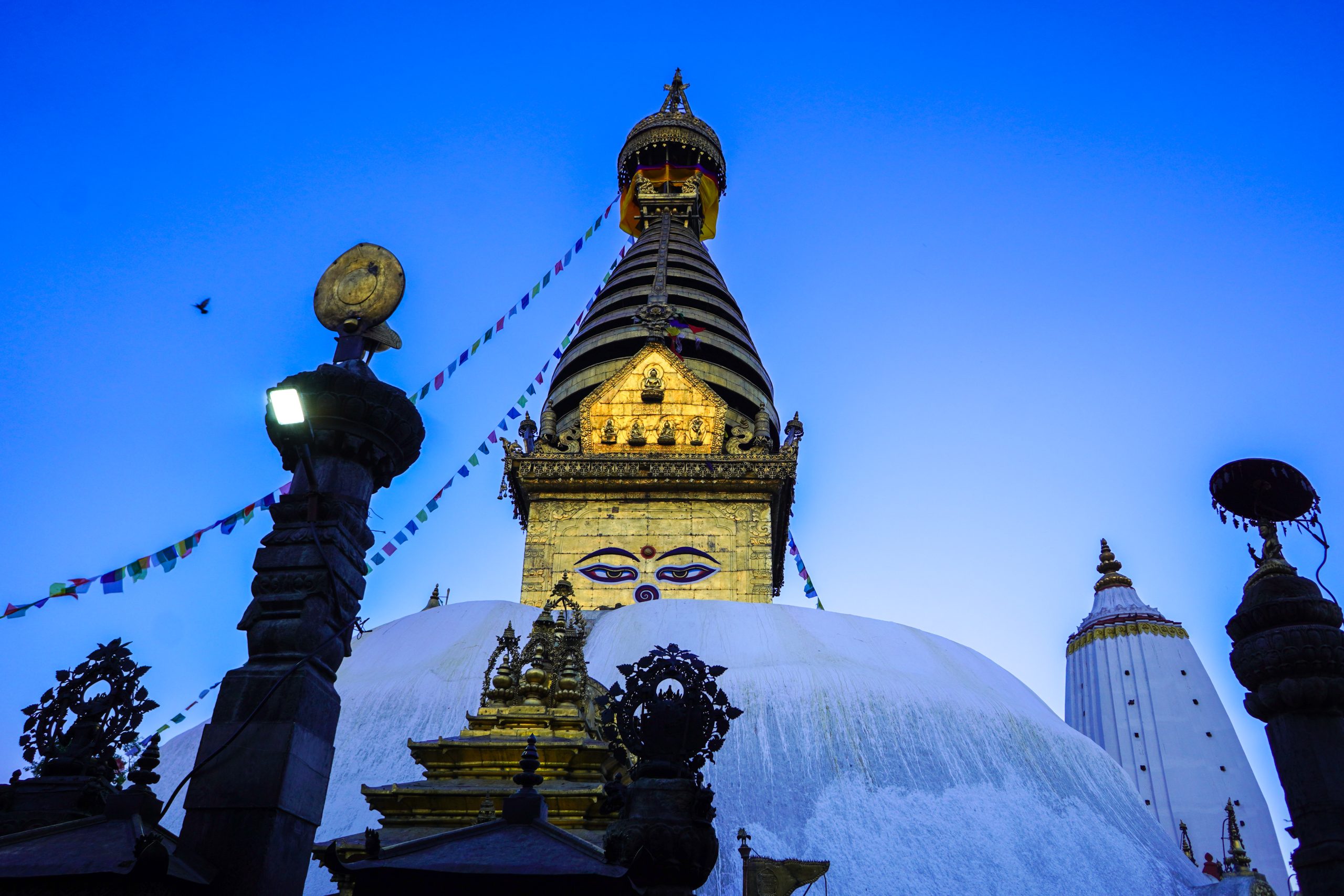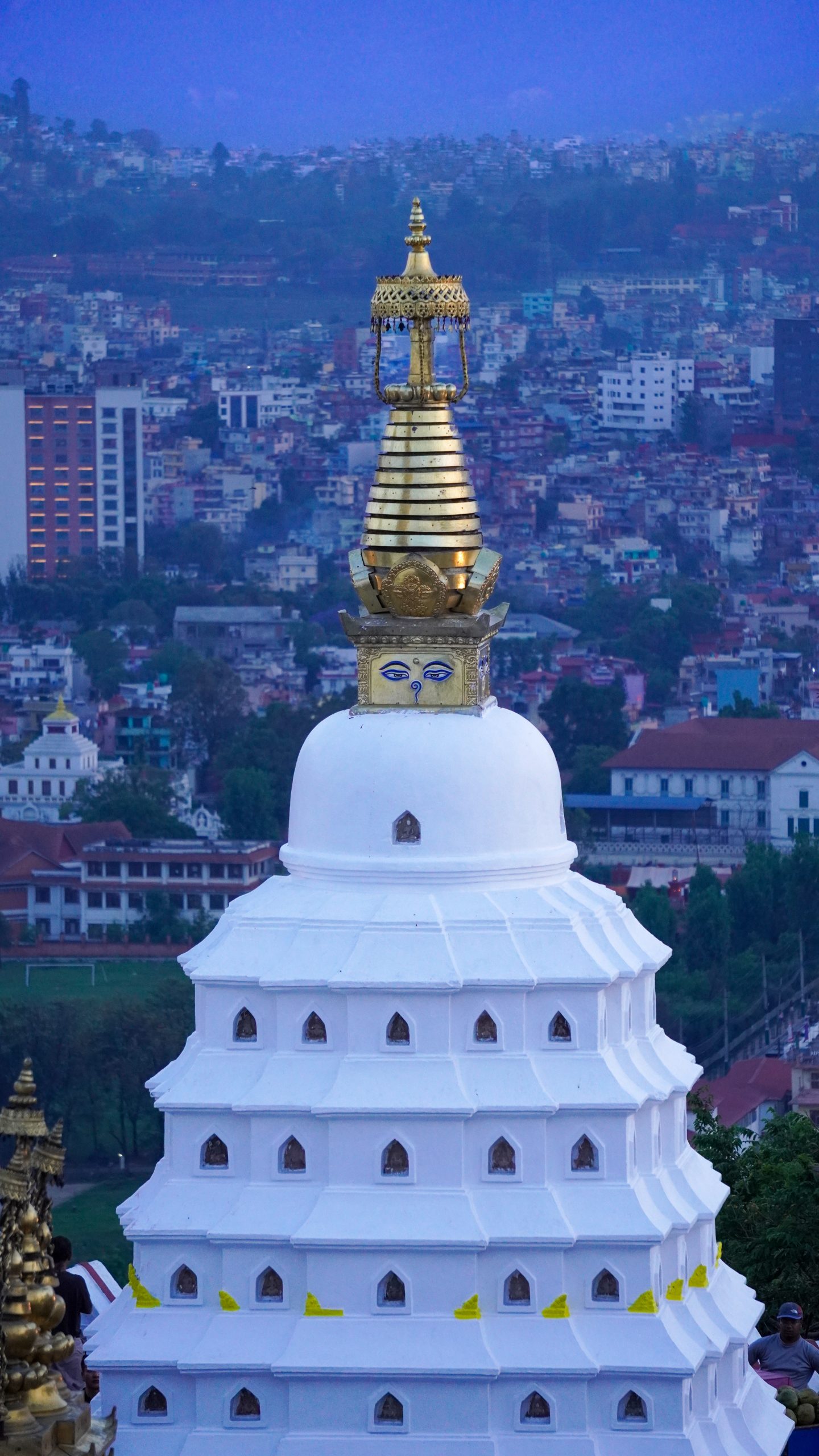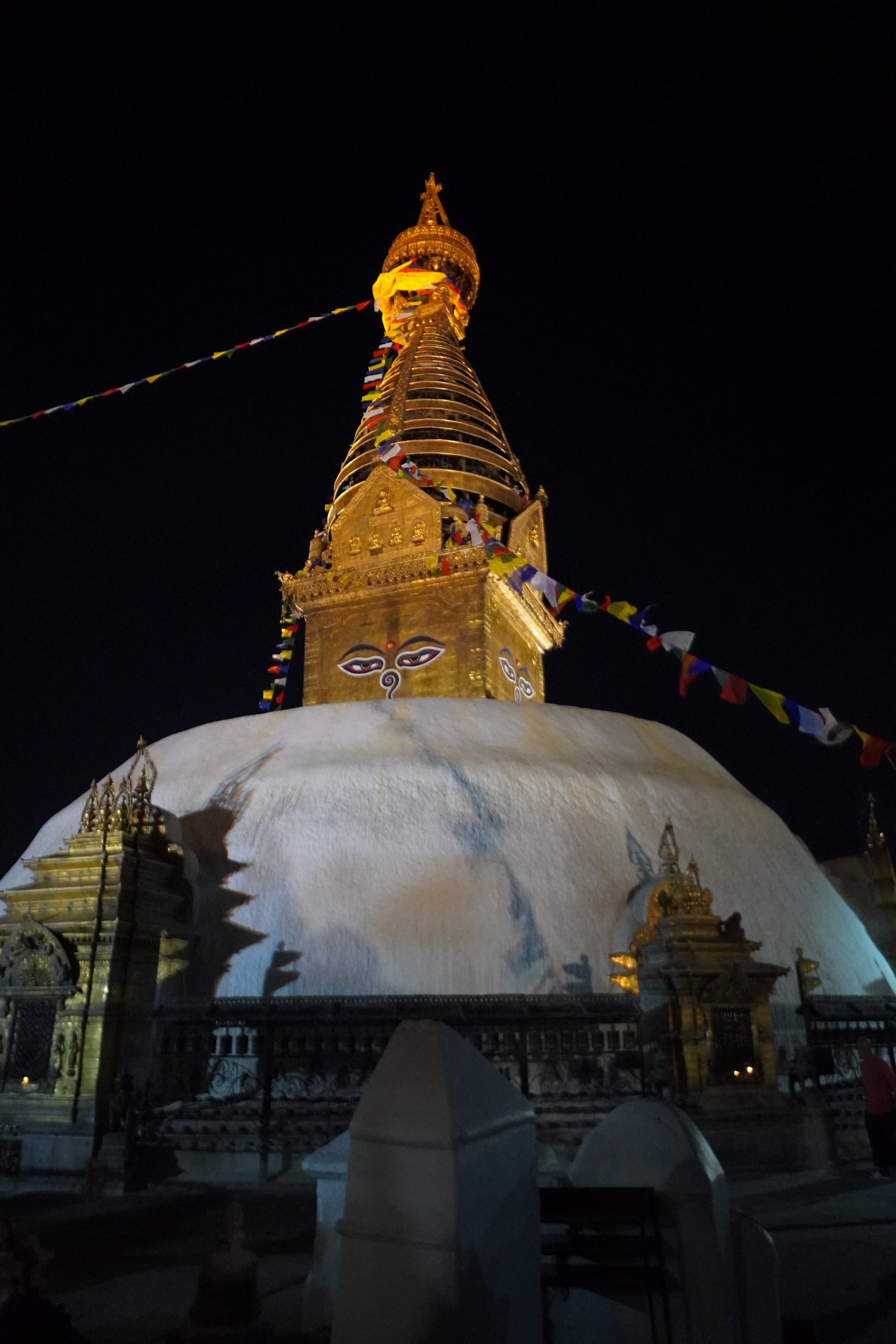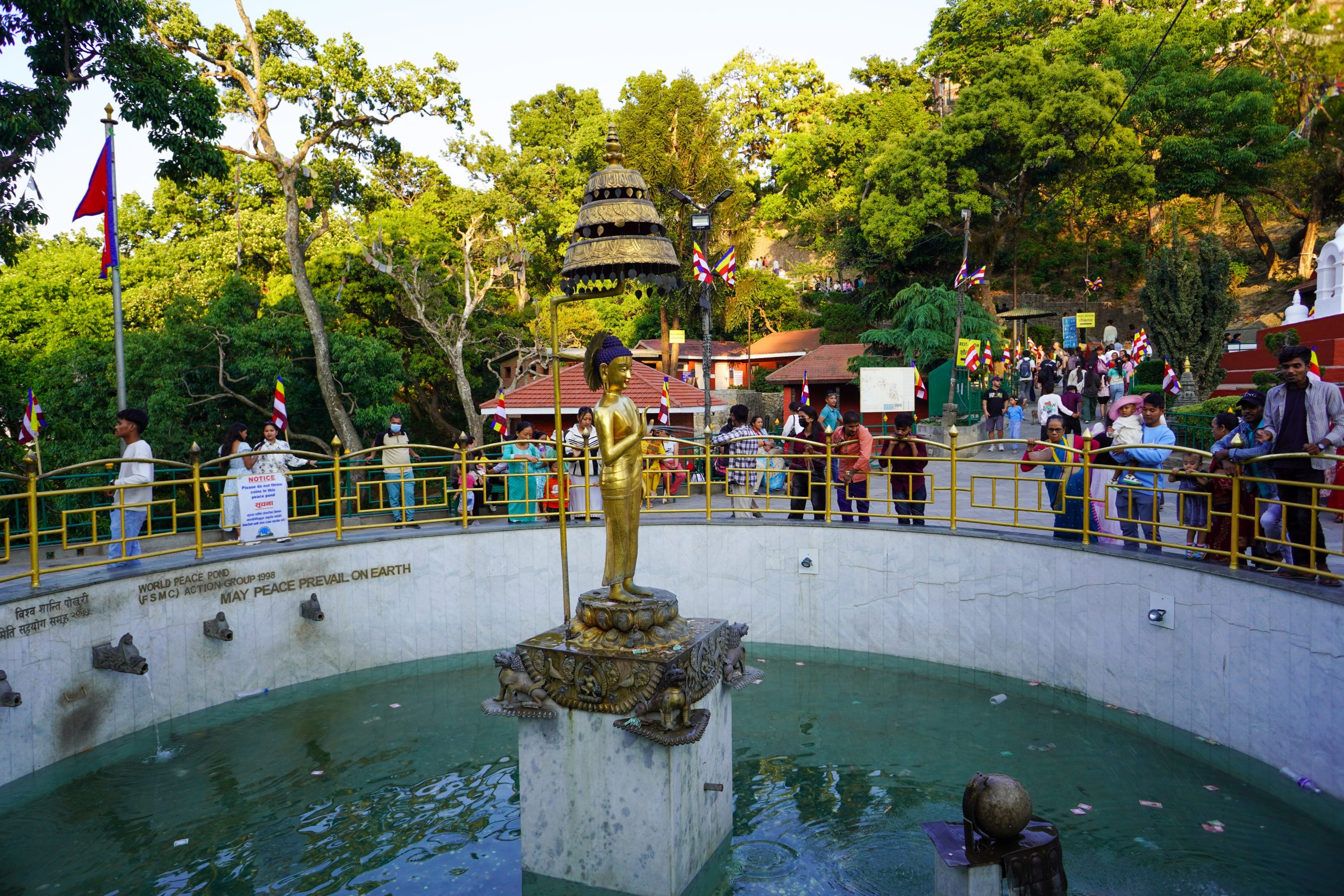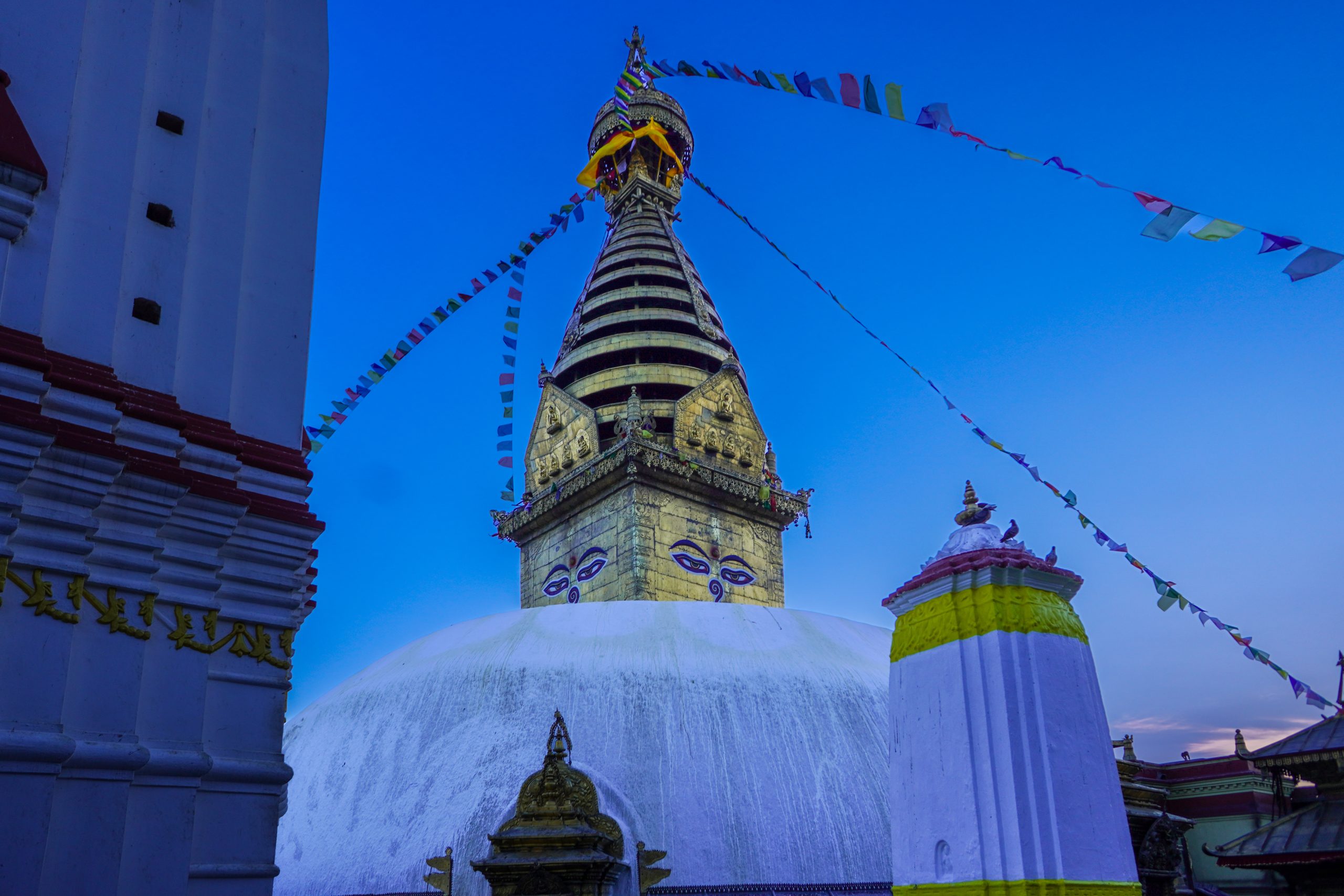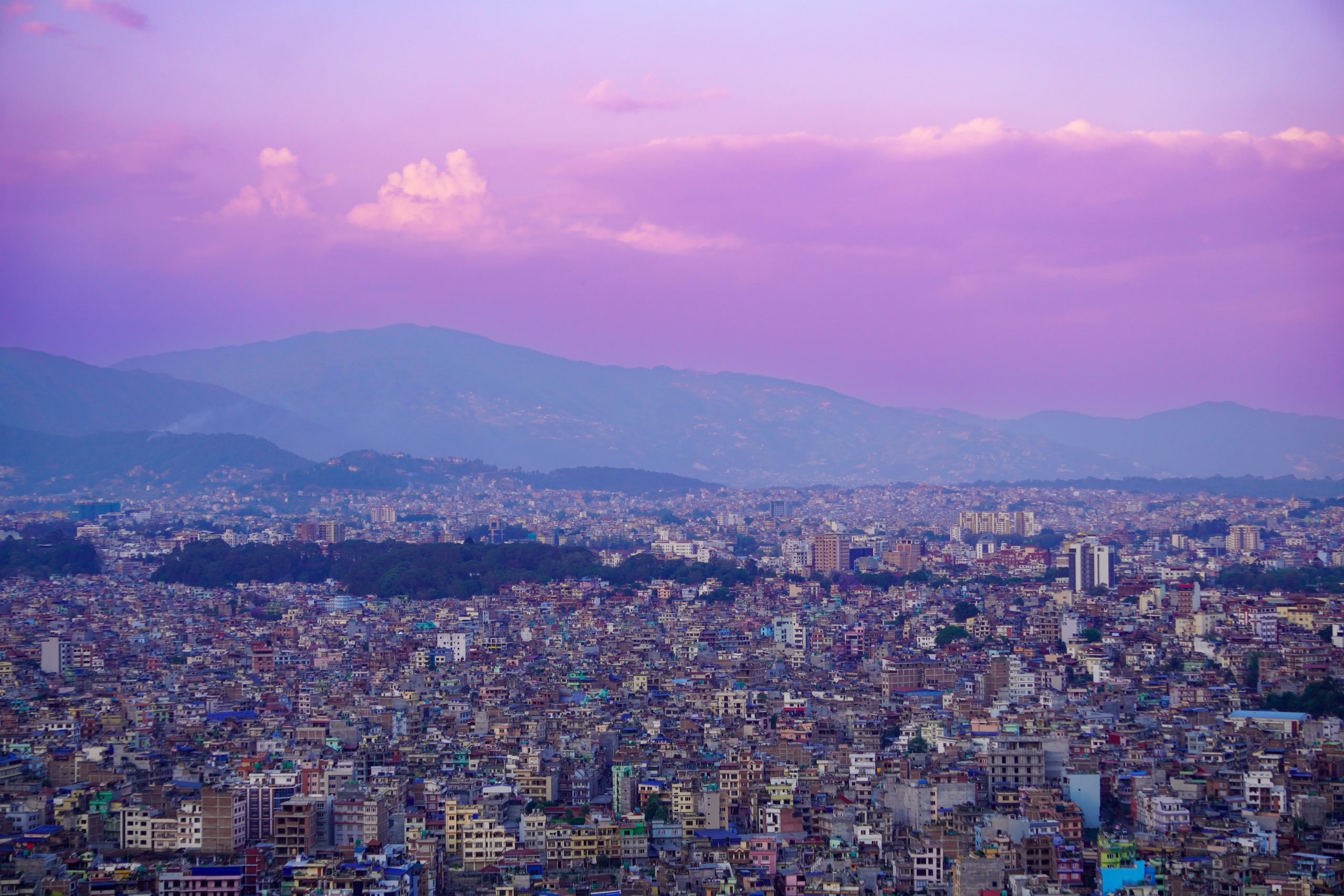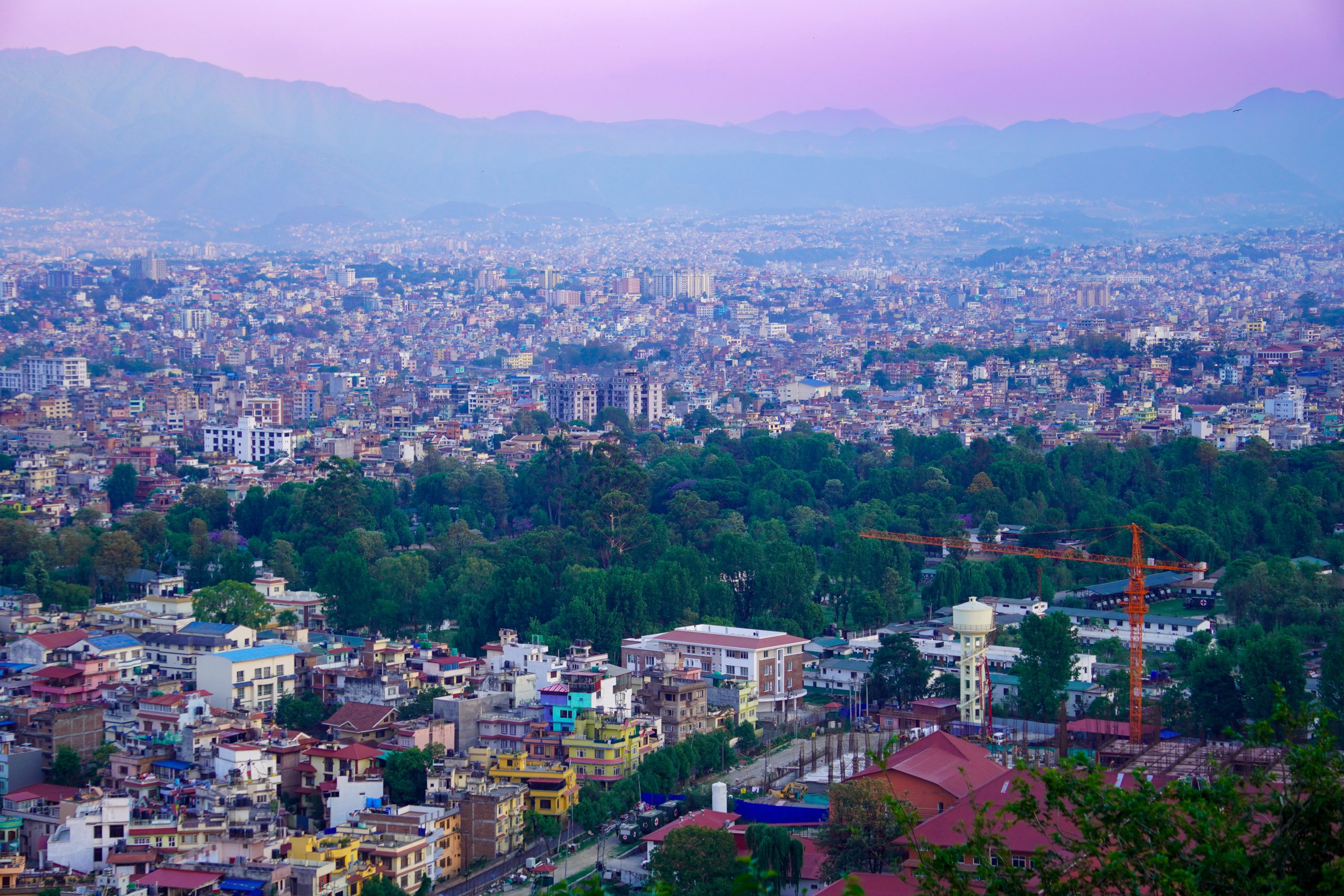Swyambhunath is the oldest religious place in Nepal. It is about 25 centuries old. Swyambhu means “self-created,” and Stupa means “the Buddha’s mind.” The stupa is surrounded by a pair of eyes, which represent wisdom and compassion. Prayers make rounds around the stupa by walking in a clockwise direction and reciting mantras, turning prayer wheels, and making wishes for themselves. It is located in the central part of the Kathmandu Valley. It is situated 77 m above the level of the valley. It generally represents typical Buddhist architecture. Although it is Buddhist architecture, the place is also revered by both Buddhists and Hindus. It has a main entrance gate with 360 steps leading all the way to the top, from where all can enjoy a magnificent view of the Kathmandu Valley. The entire structure of the stupa has some symbolic meanings. The white dome represents the entire world, and the thirteen pinnacles (tower-like structures) symbolize that sentient beings have to go through the thirteen stages of spiritual realization to reach enlightenment. The nose-like structure between the wisdom eyes looks like the Nepali number one, signifying the unity of all things existing in the world.
